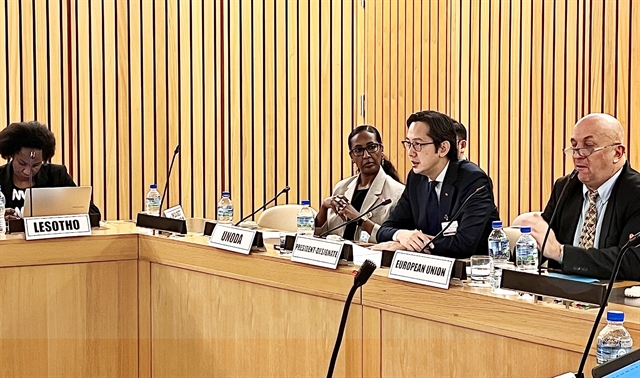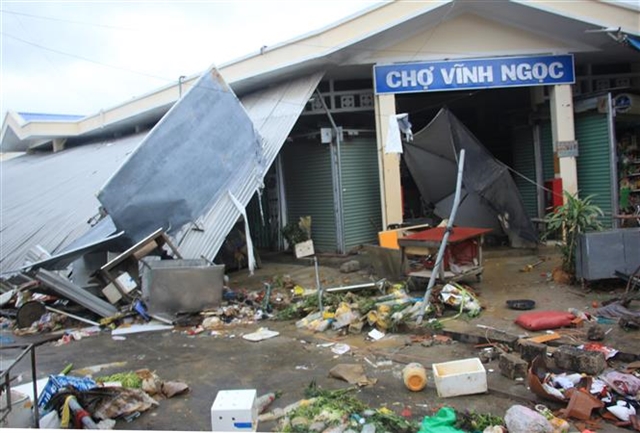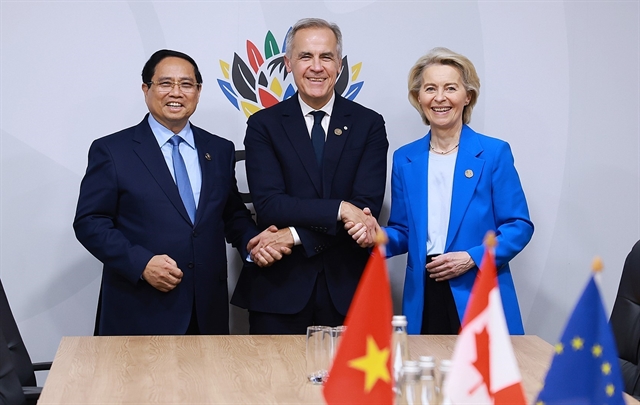 Economy
Economy
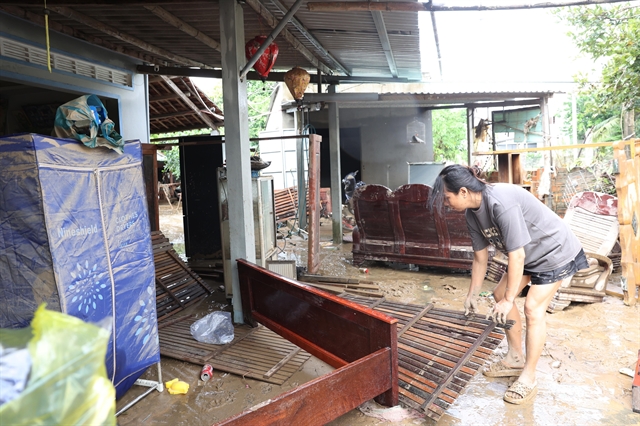
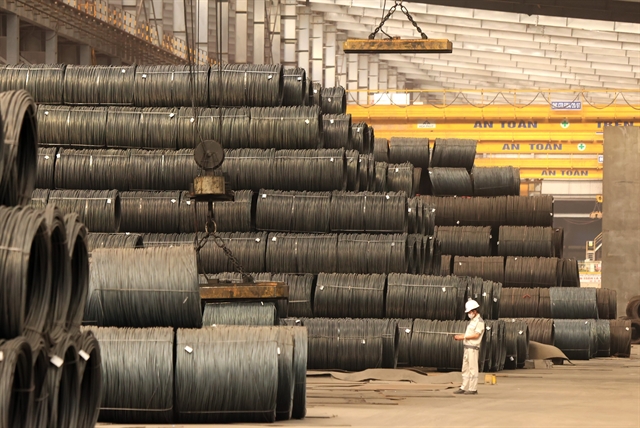
|
| Việt Nam’s steel output is forecast to reach 30 million tonnes this year, up seven per cent over 2023. — VNA/VNS Photo Tuấn Anh |
HÀ NỘI — Việt Nam spent US$10.48 billion to import nearly 15 million tonnes of steel in the first 10 months of this year, an additional concern of the domestic industry which is struggling to compete with the flood of cheap steel.
According to the General Department of Customs, iron and steel imports soared sharply from the beginning of this year, making it one of the seven groups of products with import value exceeding $10 billion in January – October.
October saw a record steel import volume at 2.41 million tonnes, worth $1.51 billion, representing increases by 55.9 per cent and 41.7 per cent, respectively against the previous month.
Overall, steel import increased by 38.2 per cent in volume and 23.2 per cent in value in the 10-month period.
Notably, steel import from China increased dramatically in the period, by 58.9 per cent in volume to 10.16 million tonnes and 43.2 per cent in value to $6.37 billion, making China the largest steel import market of Việt Nam in the period.
Japan is the second largest steel import market of Việt Nam with 1.7 million tonnes, up 4.6 per cent, followed by the Republic of Korea with 1.05 million tonnes, up 15.3 per cent.
These three markets together accounted for 87.76 per cent of Việt Nam’s total steel import.
Meanwhile, the country earned $7.96 billion from exporting steel in the period, meaning a trade deficit of $3.1 billion.
According to Việt Nam Steel Association (VSA), Việt Nam’s steel output is estimated to reach 30 million tonnes this year, up 7 per cent over 2023. However, the recovery is uncertain and steel firms are still struggling with difficulty from the harsh competition of China’s cheap steel in the domestic market.
China is increasing the export of steel in the context of weak domestic demand. Data of China’s General Administration of Customs showed that China exported more than 80.7 million tonnes of steel in the first nine months of this year, up 21.2 per cent over the same period last year. Despite an increase in China’s steel export volume, the export value dropped by 5 per cent, indicating that China’s steel prices are competitive.
China’s dumping of cheap steel to many markets over the past two years has increased protectionism around the world. China’s stainless steel alone is subject to more than 102 trade defence tariffs worldwide, including Việt Nam. China is the world’s largest steel producer with about 500 plants producing around 1.17 billion tonnes per year in 2023, accounting for more than half of the world’s total steel output.
On July 26, 2024, the Ministry of Industry and Trade decided to initiate an investigation for the application of anti-dumping measures on certain hot-rolled steel products originating from India and China in an effort to protect the domestic steel industry.
According to Nguyễn Thị Thu Trang, Director of the WTO and Integration Centre under the Việt Nam Chamber of Commerce and Industry, trade defence instruments are legal and effective tools to promote domestic production against unhealthy competition.
VSA’s President Nghiêm Xuân Đa said that in addition to measures to prevent unfair competition, it is necessary to stimulate demand for industry, including encouraging a recovery in the real estate market and accelerating public investment.
Steel demand expected to improve
Bảo Việt Securities forecast Việt Nam’s steel output will increase by around 10 per cent this year and 8 per cent in 2025 on improved demand from the domestic economic recovery, especially the real estate market which accounts for 60 per cent of the steel demand.
The enforcements of the Law on Real Estate Business, Law on Housing and Law on Land are expected to remove bottlenecks and promote the development of the real estate market.
In addition, the effort to accelerate the disbursement of public investment in the remaining months of this year will also help promote steel demand.
The disbursement of public investment reached only 52.29 per cent as of the end of October while the Government is determined to achieve the disbursement rate of more than 95 per cent this year.
The Government is planning more than VNĐ790.7 trillion ($31.18 billion) worth of public investment in 2025, higher than this year’s plan at VNĐ670 trillion.
The global production shift in which Việt Nam emerged to be an attractive destination will also help improve the steel demand. Figures of the General Statistics Office showed that realised foreign direct investment (FDI) reached $19.58 billion in the first 10 months of this year, up 8.8 per cent over the same period last year.
Việt Nam expects to attract $39-40 billion worth of FDI this year and the flow into Việt Nam is forecast to continue the upward trend next year and remain a major growth driver, according to the Central Institute for Economic Management. — VNS

